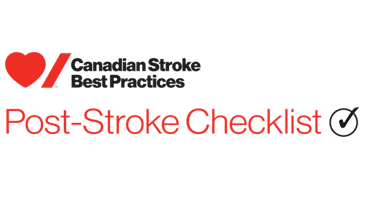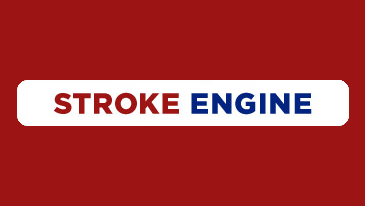- Definitions
- Core Elements of Delivery of Secondary Stroke Prevention Services
- 1. Triage and Initial Diagnostic Evaluation of Transient Ischemic Attack and Non-Disabling Stroke
- 2. Lifestyle and Risk Factor Management
- 3. Blood Pressure and Stroke Prevention
- 4. Lipid Management
- 5. Diabetes and Stroke
- 6. Anti-platelet Therapy in Ischemic Stroke and TIA
- 7. Anticoagulation for Individuals with Stroke and Atrial Fibrillation
- 8. Perioperative Management of Anticoagulant and Antiplatelet Therapy
- 9. Management of Extracranial Carotid Disease and Intracranial Atherosclerosis
- 10. Cardiac Issues in Individuals with Stroke
- 11. Cancer Associated Ischemic Stroke
Recommendations
Primary prevention can be a population-based approach to prevent disease among communities or an individually based clinical approach to disease prevention, directed toward preventing the initial occurrence of a disorder in otherwise healthy individuals. Primary prevention can be implemented in the primary care setting, and the physician, nurse practitioner, team nurses, physician assistant, pharmacist or patient may initiate a discussion of heart conditions, stroke, and vascular cognitive impairment risk reduction. It can also be implemented at a population level using legislative, regulatory, and public awareness interventions.
Primary prevention and health promotion recommendations related to heart conditions, stroke, transient ischemic attack, vascular cognitive impairment, and peripheral vascular disease emphasize the importance of screening and monitoring and treating those patients at high risk of a first clinical event. Primary prevention areas of focus include lifestyle (healthy diet, physical activity, being tobacco-free, stress reduction and limiting alcohol, recreational drugs), and screening and management of medical risk factors such as hypertension, dyslipidemia, diabetes, and atrial fibrillation.
Implementation of primary prevention strategies ideally would involve a Shared Decision-Making conversation between the patient and the provider to ensure the patient’s goals are incorporated into therapy decisions.
Primary prevention also includes the development of strategies to improve population health such as policies that create environments that facilitate making healthy choices the easier choices (examples include smoke-free legislation, revised Canada’s Food Guide as well as policies that support active and public transportation). These strategies are often led by health-oriented organizations and agencies such as Heart & Stroke, Canadian Cardiovascular Society, Canadian Lung Association, Canadian Cancer Society, Thrombosis Canada, Hypertension Canada, Diabetes Canada, Alzheimer Society of Canada, Health Canada, and national and provincial public health agencies and services.
Secondary prevention:
Secondary prevention is an individually based clinical approach aimed at reducing the risk of a recurrent vascular event in individuals who have already experienced a stroke, angina, transient ischemic attack, myocardial infarction, heart failure, heart rhythm abnormalities, structural heart disease, vascular cognitive impairment or peripheral vascular disease.
Secondary prevention recommendations are directed to those risk factors shown to reduce recurrent and prolong survival after vascular conditions, including attention to lifestyle (prudent diet, reduced sodium intake, increased level of activity, maintaining ideal body weight, smoking cessation, and controlling alcohol intake), and management of medical conditions such as hypertension, dyslipidemia, and heart rhythm management (e.g., atrial fibrillation). Secondary prevention recommendations can be addressed in a variety of settings—acute care, vascular prevention clinics (generalized or specific to conditions such as stroke, heart failure, post myocardial infarction), and community-based care settings. They pertain to patients initially seen in primary care, those who are treated in an emergency department and then released and those who are hospitalized and receive treatment in hospital because of angina, myocardial infarction, heart failure, heart rhythm abnormalities, structural heart disease, stroke, transient ischemic attack, vascular cognitive impairment or peripheral vascular disease.
Recommendations for secondary prevention of vascular conditions should be implemented throughout the recovery phase, including during inpatient and outpatient rehabilitation, reintegration into the community and ongoing follow-up by primary care practitioners. Secondary prevention should be addressed at all appropriate healthcare encounters on an ongoing basis following angina, myocardial infarction, heart failure, heart rhythm abnormalities, structural heart disease, stroke, transient ischemic attack, vascular cognitive impairment, or peripheral vascular disease.
Definitions
Transient ischemic attack (transient ischemic attack):
Transient ischemic attack (often called a ‘mini-stroke’) is a clinical diagnosis that refers to a brief episode of neurological dysfunction caused by focal brain, spinal cord, or retinal ischemia, with clinical symptoms, and without imaging evidence of infarction (Easton, 2009; Sacco et al, 2013). Transient ischemic attack and minor acute ischemic stroke fall along a continuum. Transient ischemic attack symptoms fully resolve within 24 hours (usually within one hour). If any symptoms persist beyond 24 hours, then this would be considered a stroke, not a transient ischemic attack. A transient ischemic attack event is significant as it can be a warning of a future stroke event. Patients and healthcare professionals should respond to an acute transient ischemic attack as a potential emergency.
Transient ischemic attack and minor acute ischemic stroke follow along a continuum that cannot be differentiated by symptom duration alone.
Minor Stroke
A minor ischemic stroke (also sometimes referred to as mild, or non-disabling stroke) refers to a brain infarct that is typically small and associated with a mild severity of clinical deficits or disability and may not require hospitalization.
Note: For practical purposes, individuals presenting with symptoms of transient ischemic attack or minor stroke should all follow similar assessment, diagnosis and management processes as described throughout this module. Differentiation between transient ischemic attack and minor stroke is less relevant, and all management should be informed by clinical history, presentation, and diagnostic imaging. Current evidence has shown that at least 20% of individuals presenting with transient ischemic attack will experience a subsequent more involved stroke, emphasizing the need for aggressive secondary prevention for this group (NEJM 2016).
Ischemic Stroke
An ischemic stroke is an episode of neurological dysfunction caused by focal cerebral, spinal, or retinal cell death attributable to ischemia (blockage of an artery or vein), based on pathological, imaging, or other objective (clinical) evidence of cerebral, spinal cord, or retinal focal ischemic injury based on symptoms persisting ≥24 hours or until death, or until other etiologies have been excluded (Sacco et al 2013).
Cerebral Venous Sinus Thrombosis Stroke (CVST)
A cerebral venous sinus thrombosis stroke is an infarction or hemorrhage in the brain, spinal cord, or retina because if thrombosis of a cerebral venous structure. Symptoms or signs caused by reversable edema without infarction or hemorrhage do not qualify as stroke (Sacco et al 2013).
Cryptogenic Stroke
Cryptogenic stroke is defined as a brain infarction not clearly attributable to a definite cardioembolism, large artery atherosclerosis, small artery disease or other identifiable cause despite extensive investigation (Saver et al 2017). This group accounts for 25 to 40% of all stroke (Saver, 2016; Yaghi et al, 2017).
Embolic Stroke of Undetermined Source (ESUS) Embolic stroke of undetermined source describes a subset of cryptogenic strokes that represent approximately 9 – 25% of ischemic strokes, that meet the following criteria (Tsivgoulis et al, 2017; Ntaios, JACC 2020 [17%]):
- Acute brain infarct visualized on neuroimaging; not a subcortical lacune <1.5 cm.
- Absence of proximal atherosclerotic vessel stenosis >50%
- No atrial fibrillation or other major-risk cardioembolic source
- No other likely cause of stroke (e.g., dissection, arteritis, cancer)





